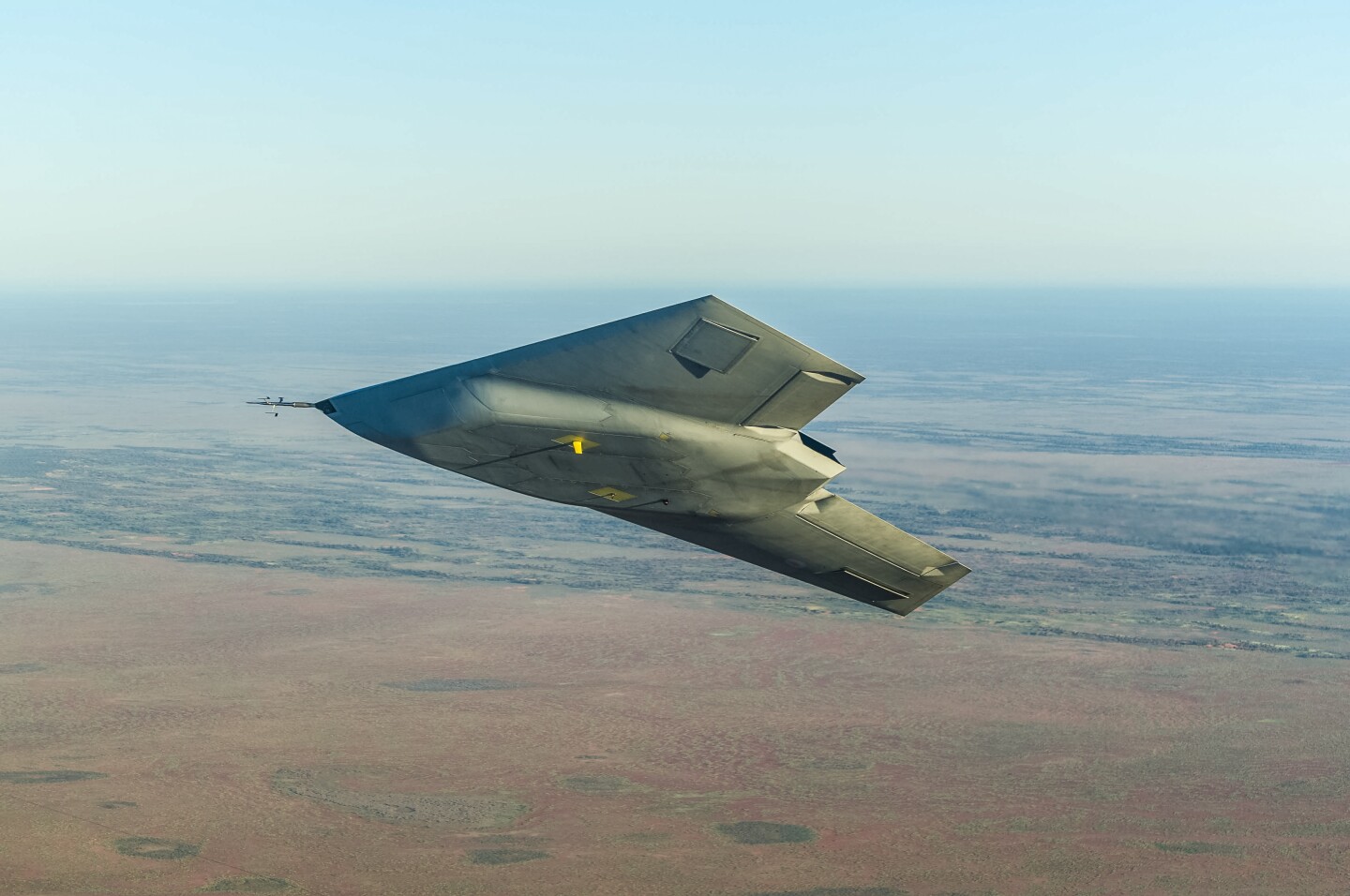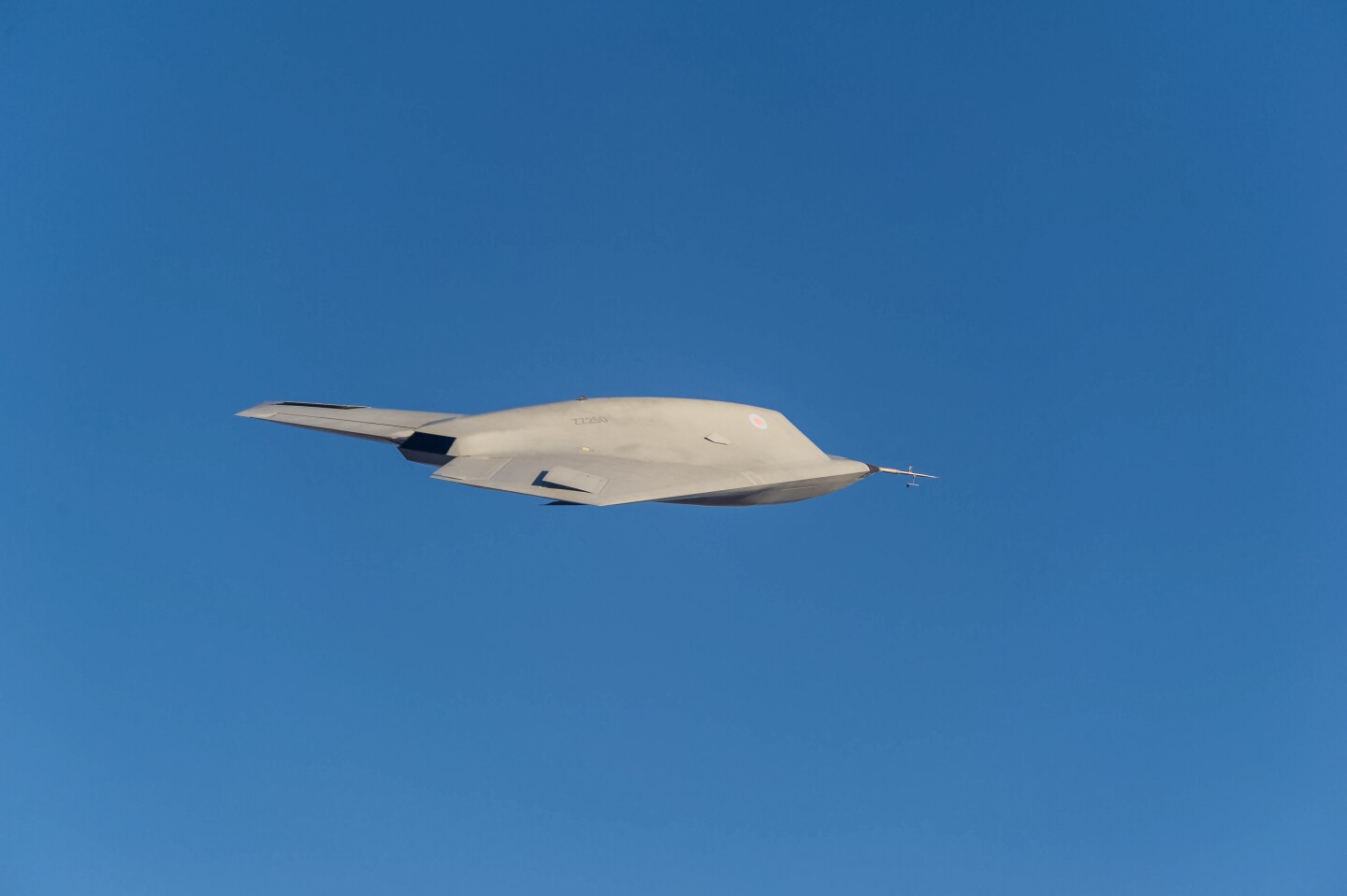The UK's Ministry of Defence (MoD) and BAE Systems this week announced details of last year's first test flight of the Taranis unmanned combat demonstrator aircraft, which BAE bills as the "most advanced aircraft ever built by British engineers." The 15-minute test flight took place at an undisclosed location outside of the UK on August 10, 2013 as part of a project to show the UK’s ability to create a unmanned combat air vehicle (UCAV) capable of surveillance, targeting, intelligence gathering, deterrence, and strikes in hostile territory.
One of Britain’s most closely guarded military secrets, Taranis has been sheathed in secrecy from the start with access to it and its technology strictly limited. Even getting a good look at it has been difficult as BAE explains that many aspects of the craft’s technology, shape, design, and even finish, remain classified, as does any exact information on its performance. However, at a press briefing on Monday, BAE and the MoD said that Taranis "surpassed all expectations" during the flight tests.
First unveiled to the public in July 2010, the top-secret drone is the product of 250 British companies led by BAE and partners including Rolls-Royce, the Systems division of GE Aviation, QinetiQ, and MoD military staff. Named after the Celtic god of thunder, it is about the size of a Hawk fighter with a 10 m (33 ft) wingspan, and boasts state-of-the-art stealth, propulsion, and aerospace technology. It’s been under development since 2006, has consumed £185 million (US$300 million) in public and private funds, and one-and-a-half-million man hours.

August’s tests were carried out under the command of BAE Systems’ test pilot Bob Fraser with piloting by Neil Dawson. During the 15-minute maiden flight, Taranis made a perfect take-off, rotation, climb-out and landing. Other flights of up to one-hour's duration at various altitudes and speeds followed.
These flights were proceeded by earlier static power tests, unmanned pilot training, radar cross section measurements, and ground station system integration carried out at BAE’s military aircraft factory at Warton in Lancashire. The Taranis and its ground station were then shipped to the overseas test location for a series of high speed taxi tests in July before its maiden flight.

Taranis was designed to demonstrate that the UK has the required knowledge and expertise to produce an unmanned combat aircraft that could one day conduct precision strikes over a long range whilst remaining undetected. BAE says that Taranis will help the MoD and the Royal Air Force to decide on how to mix manned and unmanned fast jets in a combat role as part of Britain’s defenses.
"Taranis is providing vital insights that will help shape future capabilities for our Armed Forces in coming decades," said Philip Dunne, Minister for Defence Equipment, Support and Technology. "Its advanced technology is testament to the UK’s world leading engineering skills that keep Britain at the cutting edge of defense."
The video below features the Taranis test flight.
Source: BAE Systems


















